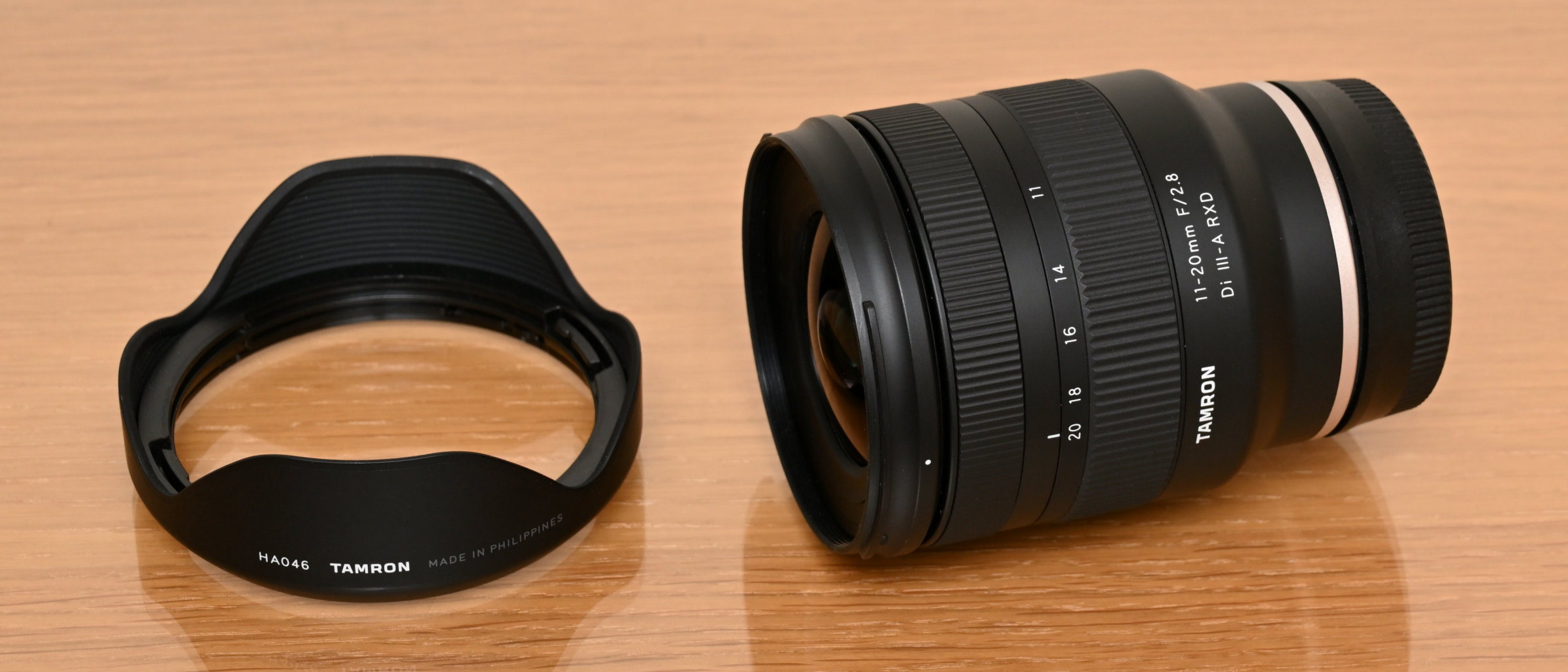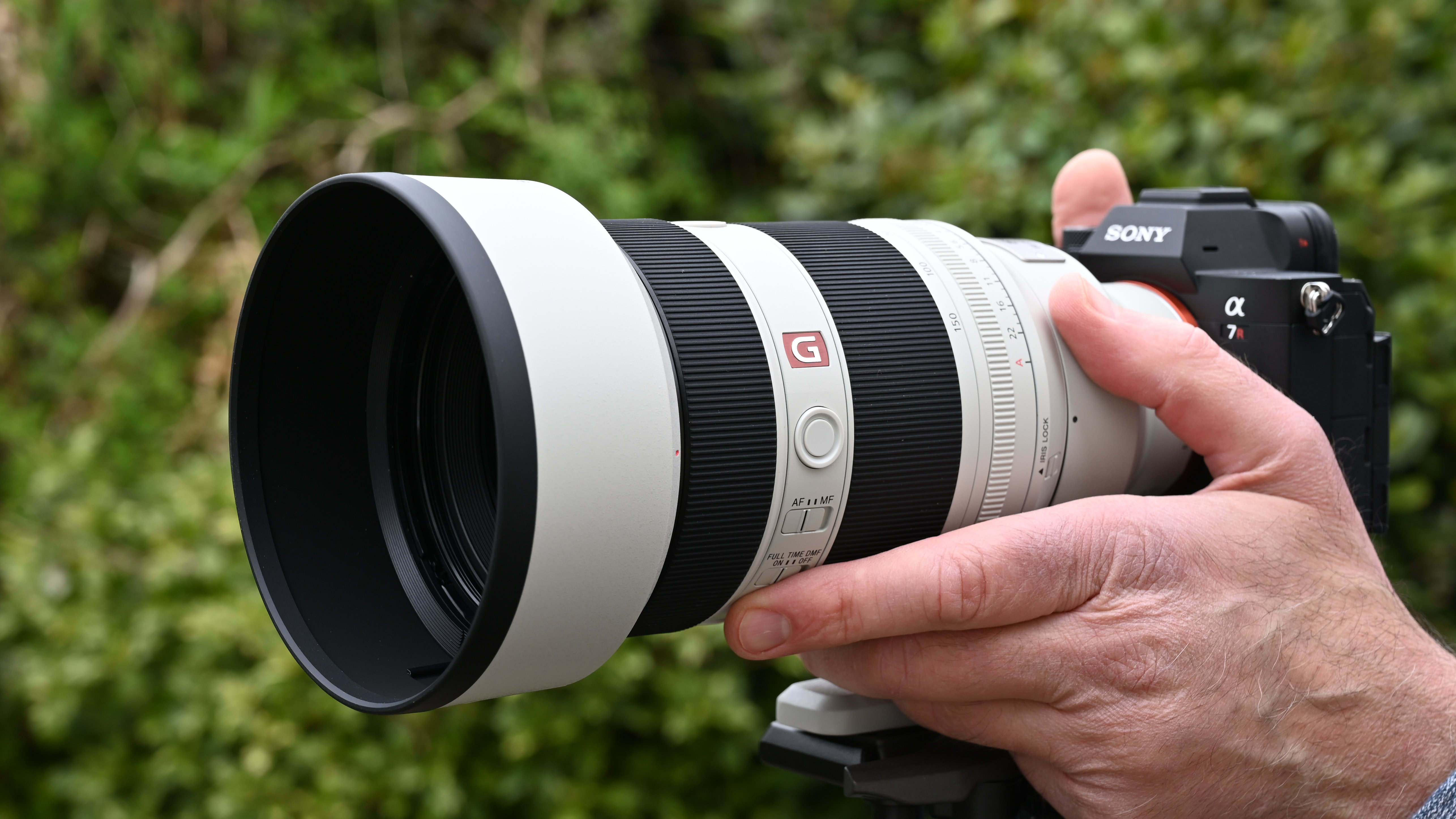Digital Camera World Verdict
Designed for Sony’s APS-C format, E-mount mirrorless cameras, the Tamron 11-20mm delivers an extensively wide-angle zoom range, equivalent to 16.5-30mm in full-frame terms. It combines this with a relatively fast and constant f/2.8 aperture, further extending the versatility of the lens. Build quality and handling are very good. The lens features weather-seals and comes with a bayonet-fit petal-shaped hood. Autofocus is fast and virtually silent and image quality is highly impressive, although there’s no optical image stabilizer and the Tamron is pretty pricey.
Pros
- +
Compact and lightweight
- +
Fast and constant f/2.8 aperture
- +
Impressive overall performance
Cons
- -
Heavy distortion at 11mm
- -
No optical stabilizer
- -
Pretty pricey
Why you can trust Digital Camera World
The Tamron 11-20mm F/2.8 Di III-A RXD is billed as the world’s first 11-20mm f/2.8 zoom lens. That’s certainly true in the context of Sony E-mount APS-C format mirrorless cameras but Tokina launched its AT-X 11-20 F2.8 PRO DX with an identical zoom range and aperture rating for DSLRs a year earlier, back in the summer of 2020. Either way, The Tamron lens is significantly smaller and more lightweight, weighing just 335g and having a 67mm filter attachment thread, compared with 560g and 82mm for the Tokina.
The zoom range is equivalent to 16.5-30mm in full-frame terms, great for landscape and architectural photography. The lightweight construction is similarly ideal if you’re trekking into the hills or pounding the streets in search of these kinds of shots. The fast f/2.8 aperture (at least for a zoom lens) also makes the Tamron useful for shooting interiors or freezing action in low lighting conditions, as well as for astrophotography.
Specifications
Mount: Sony E, Fujifilm X
Manufacturer model number: Model B060
Full frame: No
Autofocus: Yes
Image stabilization: No
Lens construction: 12 elements in 10 groups
Angle of view: 71.5-105.3 degrees
Diaphragm blades: 7
Minimum aperture: f/16
Minimum focusing distance: 0.15-0.24m
Maximum magnification ratio: 0.25-0.13x
Filter size: 67mm
Dimensions: 73x86mm
Weight: 335g
Key features
The Tamron’s standout features are that it combines a sweep of wide viewing angles from 105.3 to 71.5 degrees, as measured on the diagonal of the frame, with a fast f/2.8 aperture that remains constant throughout the zoom range. The minimum focus distance of just 0.15m is impressively short at the 11mm end of the zoom range, but a more average 0.24mm at the long end. Similarly, the maximum magnification ratio is 0.25x at 11mm, dropping to 0.13x at 20mm.
The optical path includes 12 elements in 10 groups, and features two GM (Glass Molded) aspherical elements with the aim of maintaining good sharpness across the entire image frame, along with two LD (Low Dispersion) elements and one XLD (eXtra Low Dispersion) element, to further enhance sharpness and contrast while minimizing chromatic aberrations. Tamron’s acclaimed BBAR-G2 (Broad-Band Anti-Reflection Generation 2) coating is employed to minimize ghosting and flare and, to further combat this, the lens is supplied complete with a petal-shaped, bayonet-fit hood.
Build and handling
Although relatively compact and lightweight for such a fast, wide-angle zoom lens, the Tamron feels robust and well-built. It has a metal mounting plate and the barrel is made from high-quality plastic. The construction includes weather-seals and a fluorine coating on the front element, to repel moisture and grease, and to make cleaning easier.
The zoom and focus rings operate with smooth precision, the latter being electronically coupled to the autofocus drive motor. As usual, a downside of this in terms of handling is that the lens lacks a focus distance scale, which some landscape photographers like to use for setting the hyperfocal distance. However, you could argue that electronic focusing aids in mirrorless cameras make a focus distance scale somewhat superfluous.
The lens is at its most compact at the 20mm zoom setting. As you zoom out towards the 11mm end, the inner barrel gradually extends, increasing the overall length of the lens by a maximum of about 15mm.
Performance
Based on Tamron’s RXD (Rapid eXtra-silent stepping Drive) technology, the autofocus system relies on a stepping motor. This is typically fast and virtually silent in operation, while also being compatible with Sony’s Fast Hybrid AF and Eye AF autofocus modes in compatible cameras.
The fact that the closest focus distance and largest magnification factor are available at the short end of the zoom range might seem a little counter-intuitive. The upside, however, is that you can get in really close when shooting with the widest viewing angle, and really exaggerate perspective for creative effect.
Sharpness is very good across the entire image frame, even when shooting wide-open at f/2.8. As you’d expect, edge-sharpness gets even better if you stop the aperture down a little. Chromatic aberrations are negligible but barrel distortion at 11mm can be noticeable when uncorrected. Even so, in-camera correction is available and the Tamron certainly has far less distortion than many recent lenses for mirrorless cameras, which are all but unusable without in-camera correction.
Sample images
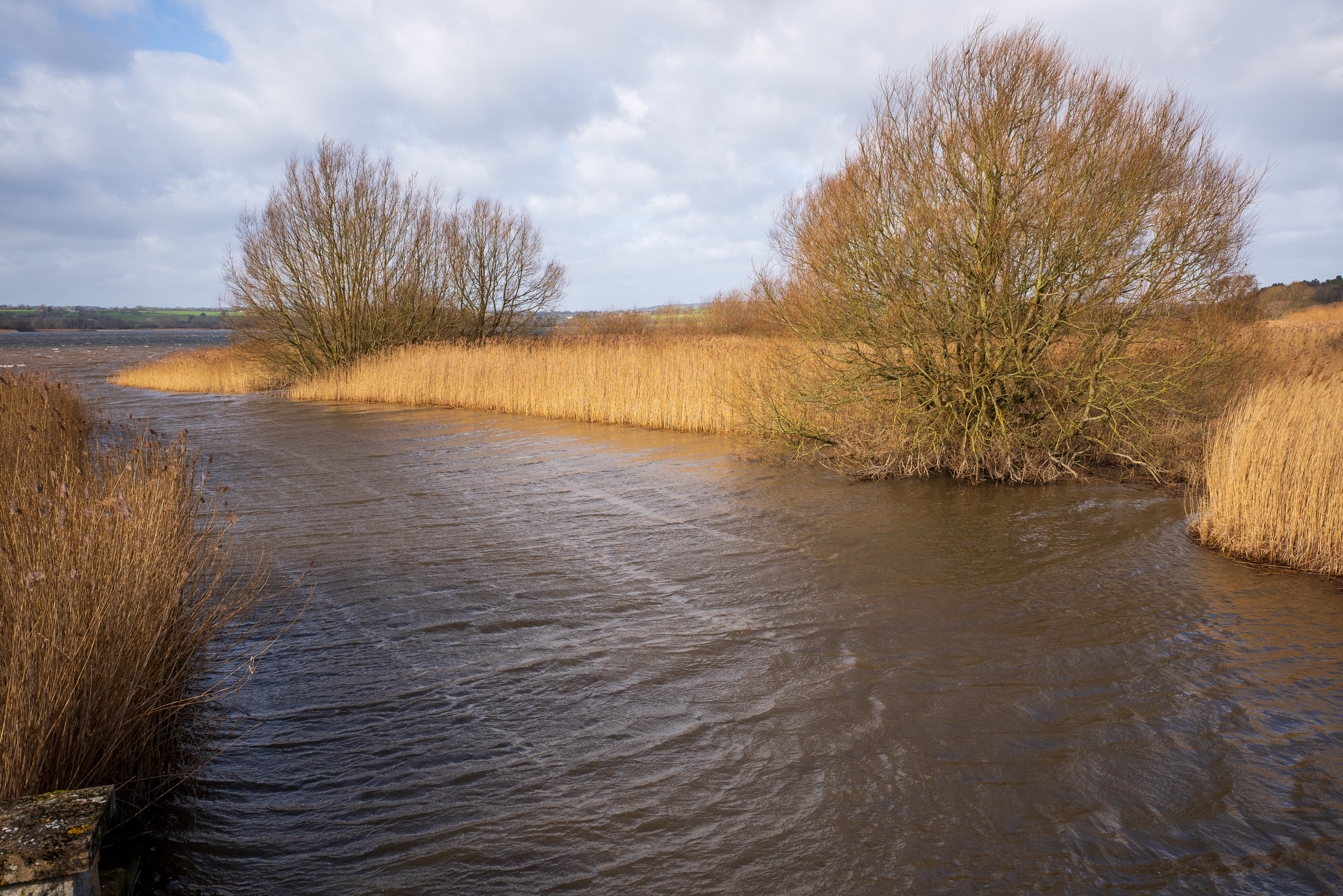
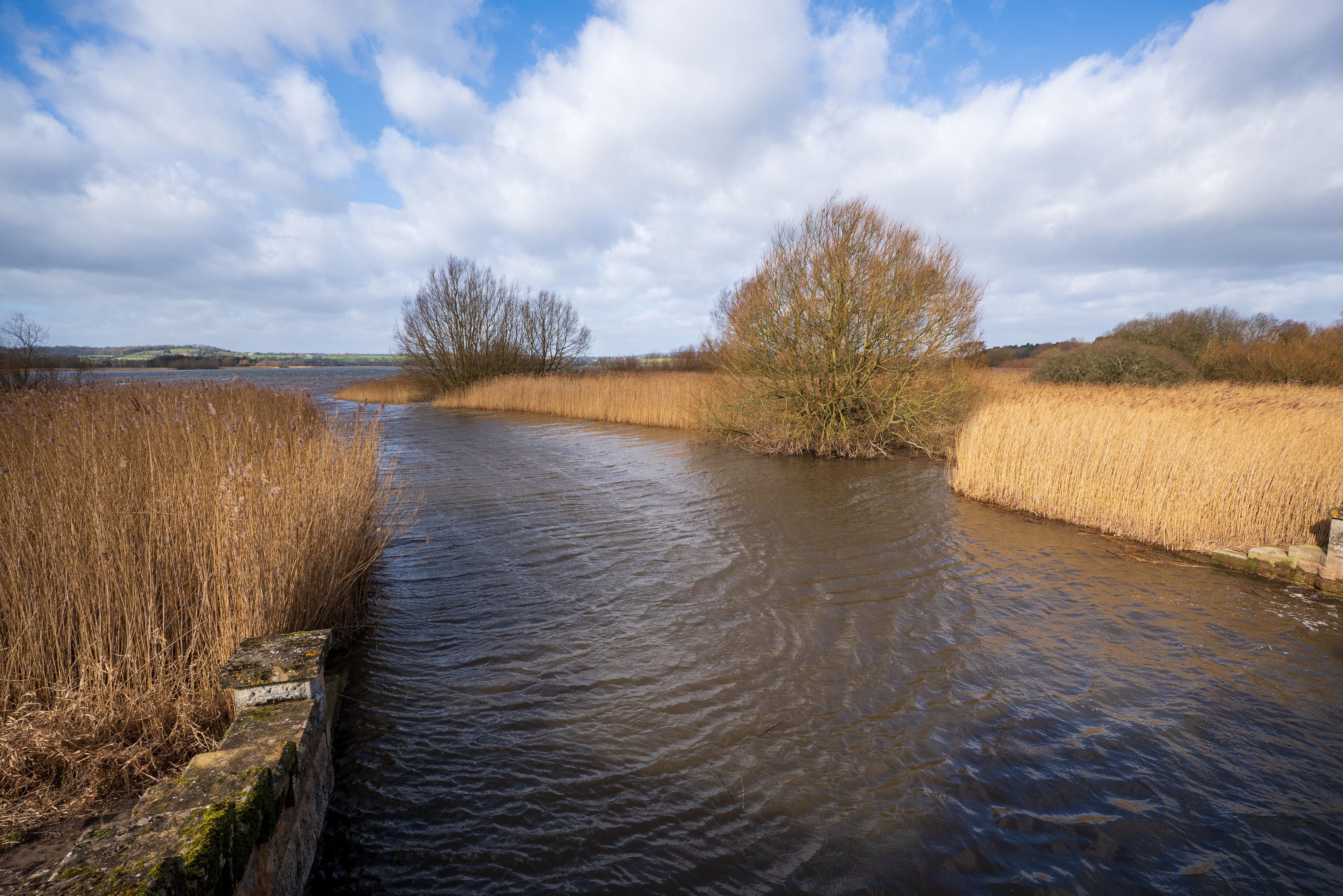

Lab results
We run a range of lab tests under controlled conditions, using the Imatest Master testing suite. Photos of test charts are taken across the range of apertures and zooms (where available), then analyzed for sharpness, distortion and chromatic aberrations.
We use Imatest SFR (spatial frequency response) charts and analysis software to plot lens resolution at the center of the image frame, corners and mid-point distances, across the range of aperture settings and, with zoom lenses, at four different focal lengths. The tests also measure distortion and color fringing (chromatic aberration).
Sharpness:
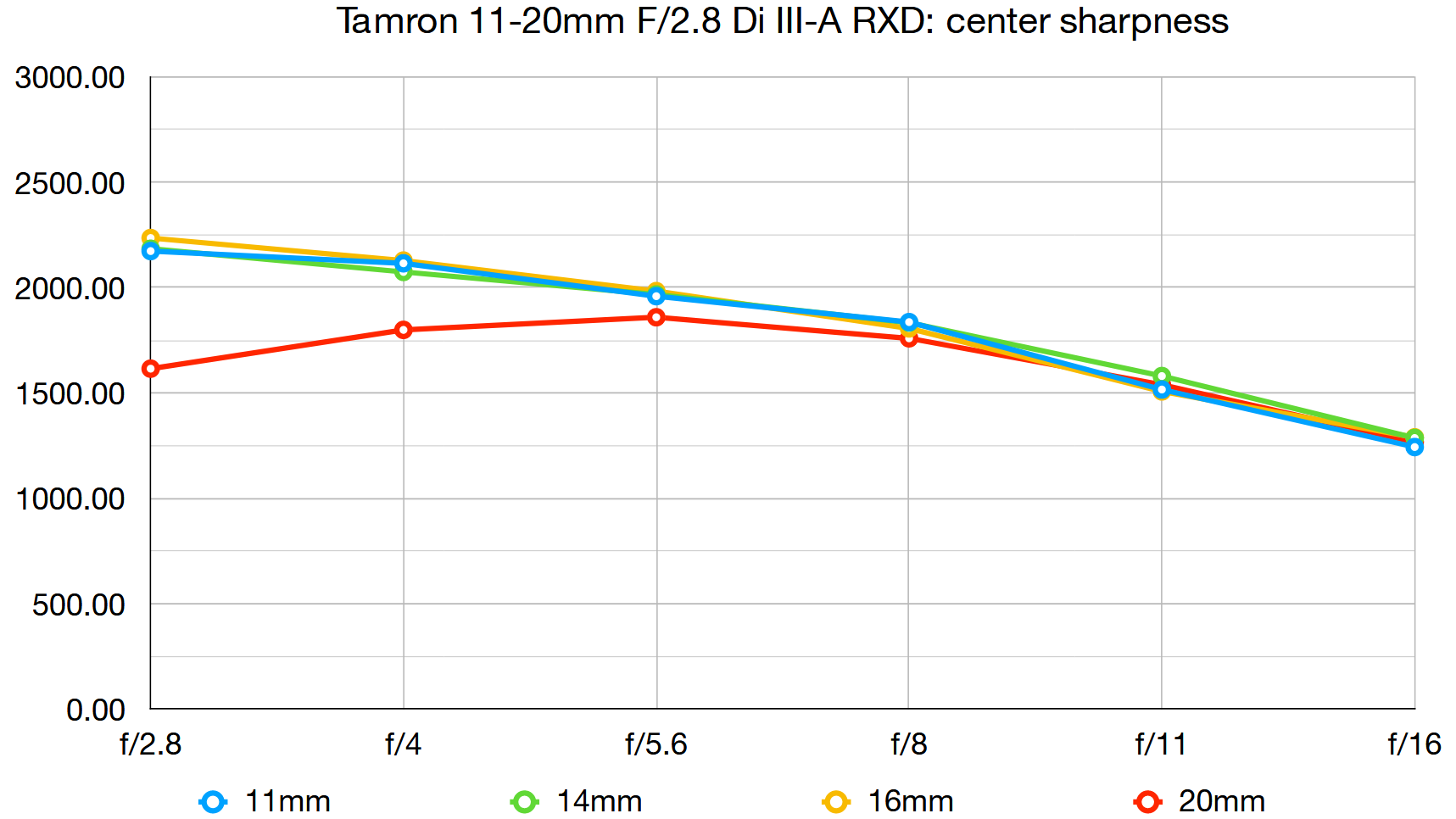
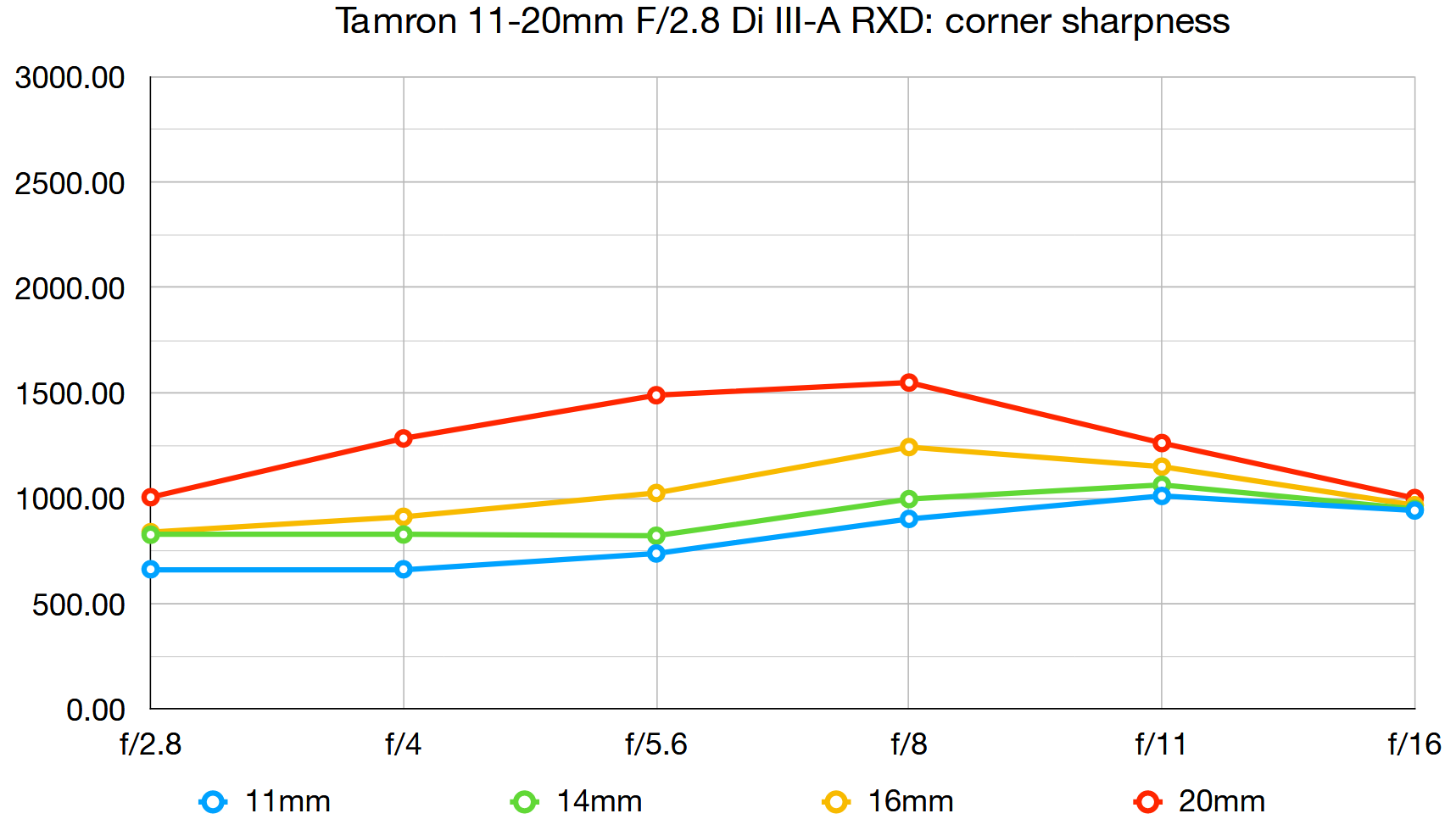
With ultra-wide viewing angles, regular sized test charts need to be shot from extremely close range. This typically slews the test results for sharpness away from the central region of the image frame. In ‘real-world’ shooting, we found the Tamron’s edge- and corner-sharpness were highly impressive, coming close to the excellent center-sharpness data from our lab-tests.
Fringing:
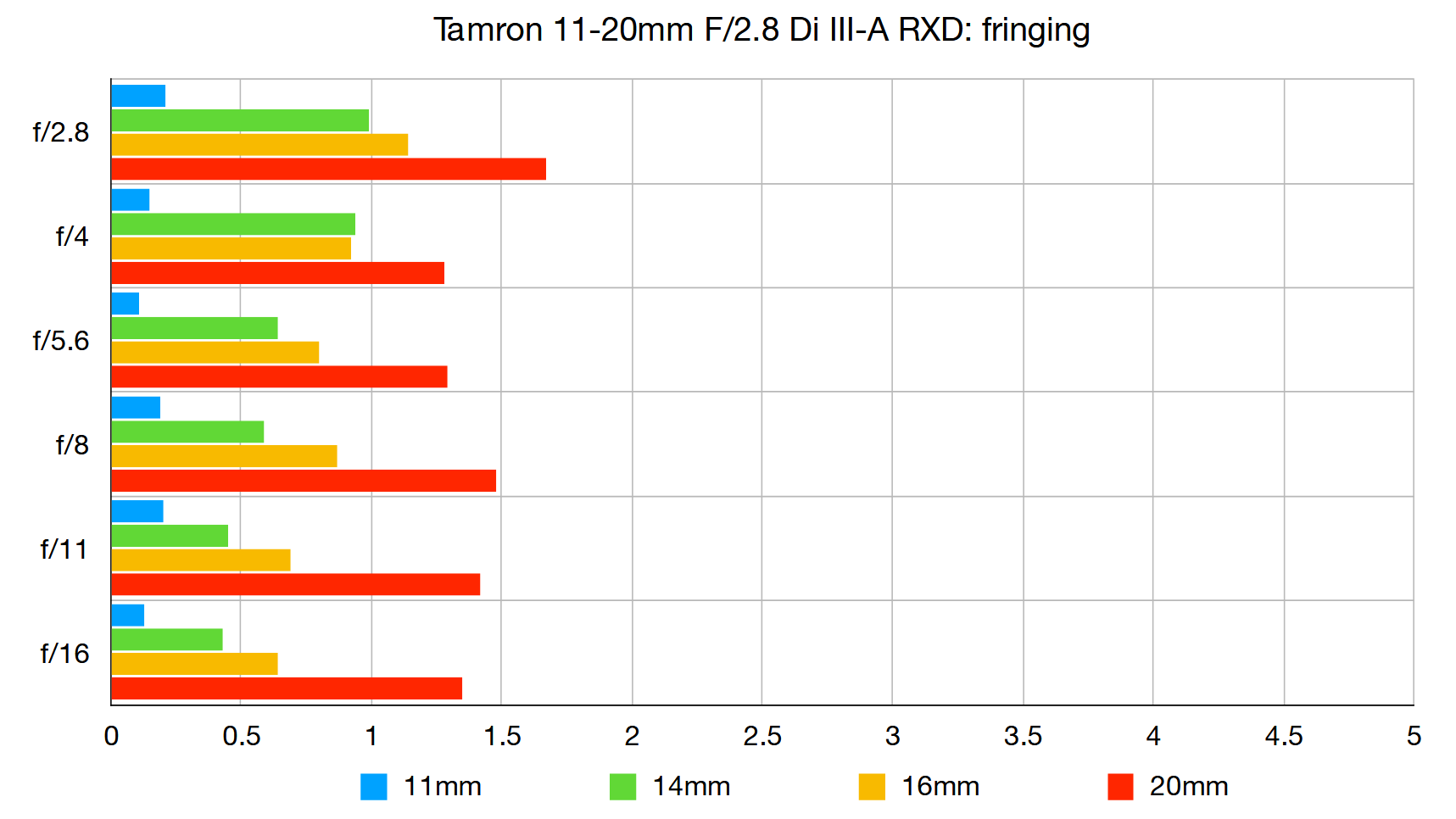
Color fringing is absolutely negligible in the 11-16mm sector of the zoom range, even in the extreme corners of the image frame. It’s also extremely minimal at the longest zoom setting, and that’s without any automatic corrections being applied. Superb performance in this respect was borne out in our real-world tests as well as in laboratory conditions.
Distortion:
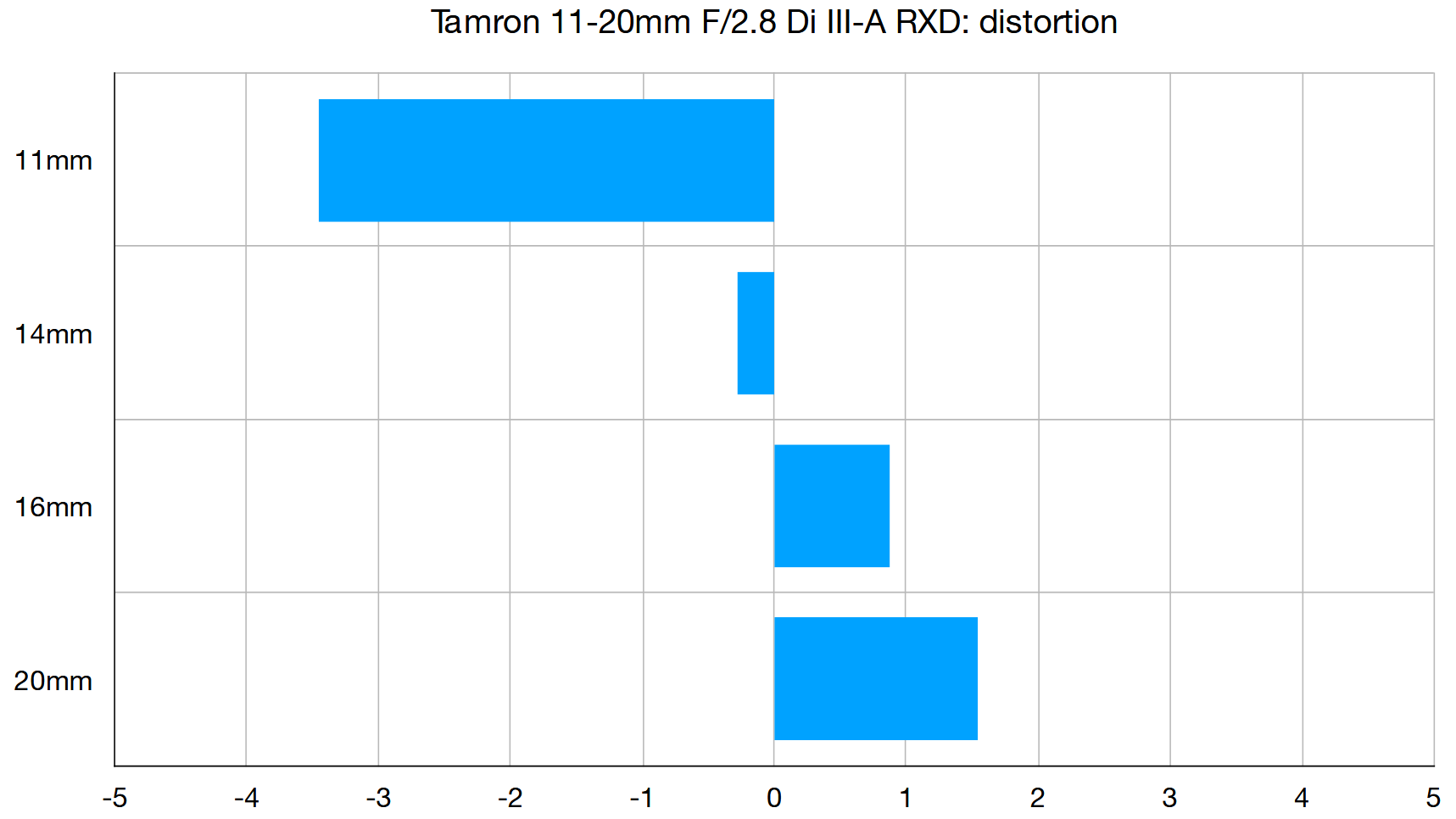
Barrel distortion can be quite noticeable at 11mm but is negligible at 14mm. There’s slight barrel distortion at 16mm which becomes more noticeable at 20mm. Even so, compared with many recent lenses for mirrorless cameras, which rely almost entirely on in-camera corrections to deliver acceptable levels of distortion, the Tamron performs very well.
Verdict
Compact and lightweight but highly capable, the Tamron 11-20mm is a smart choice for Sony APS-C format, E-mount mirrorless cameras. It’s particularly well suited to landscape photography, with easy filter fitment via a 67mm attachment thread. Its f/2.8 aperture rating makes it equally adept for indoor shooting, late-night cityscapes and astrophotography. It’s certainly not an inexpensive lens but its versatility, performance and robust, weather-resistant build quality make it a great buy at the price.
Read more:
The best Sony lenses
The best Sony cameras
Best wide-angle lenses
The best lenses for astrophotography
Matthew Richards is a photographer and journalist who has spent years using and reviewing all manner of photo gear. He is Digital Camera World's principal lens reviewer – and has tested more primes and zooms than most people have had hot dinners!
His expertise with equipment doesn’t end there, though. He is also an encyclopedia when it comes to all manner of cameras, camera holsters and bags, flashguns, tripods and heads, printers, papers and inks, and just about anything imaging-related.
In an earlier life he was a broadcast engineer at the BBC, as well as a former editor of PC Guide.

